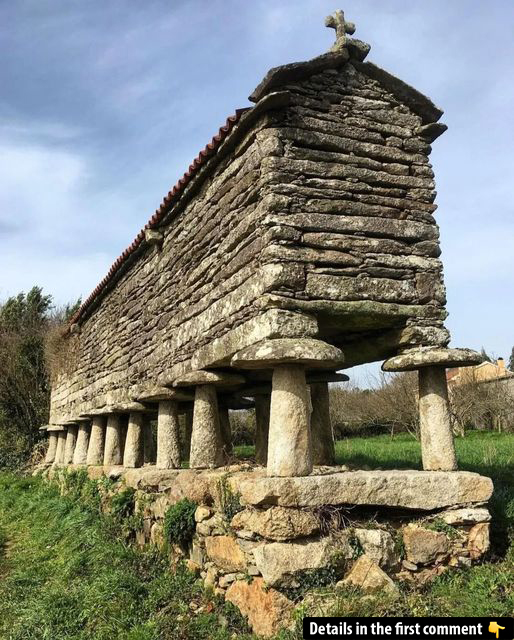In the picturesque regions of Galicia, Asturias, and northern Portugal, a unique and fascinating architectural feature stands tall — the hórreo. These traditional granaries, elevated on stone pillars, offer not only a glimpse into rural life centuries ago but also a piece of living history. Hórreos have been vital for preserving crops and grains, keeping them safe from rodents and the elements. In this article, we explore the history, regional variations, and enduring appeal of these iconic structures.
The Origins of the Hórreo
The hórreo’s origins date back to ancient times in the Iberian Peninsula, where they were built to store grain in an elevated position, ensuring the crops were safe from animals and humidity. While these granaries are most closely associated with Galicia in Spain, their presence extends into parts of Portugal, Asturias, and Cantabria. The design of hórreos varies regionally, but they share the common goal of providing a functional and durable storage space for essential foodstuffs.
Made from wood, stone, or a mix of both, hórreos are raised above the ground on sturdy pillars, often set on flat staddle stones that protect the stored food from vermin. The ventilation provided by the slits in the walls also helps preserve the grain and prevent mold. This clever design ensured that farmers had access to vital resources throughout the year, even during periods of scarcity.
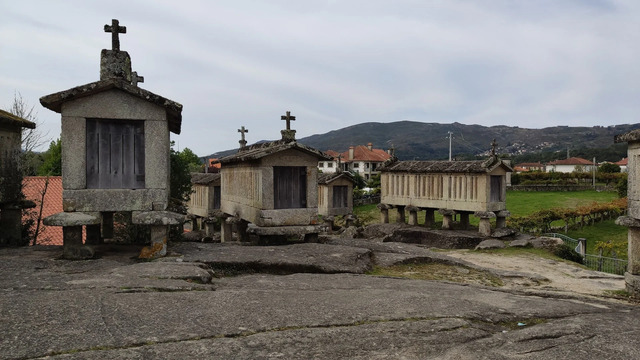
Video
Check out this video as we explore the longest hórreo in the world, located in Araño Rianxo, and discover the charm of rural Galicia.
Regional Variations: Hórreos Across Galicia
One of the most fascinating aspects of hórreos is the distinct regional variations found across Galicia. Each comarca, or district, has its own unique take on the traditional design. As you travel through Galicia, you’ll encounter a variety of hórreos, each with its own characteristics and aesthetic appeal. These variations reflect not only regional differences in building materials but also in cultural preferences.
In some areas of Galicia, hórreos are constructed primarily from wood, while in others, stone is the material of choice. The overall size and shape of the structures can also vary, with some being much larger or more intricately designed than others. This diversity creates an interesting visual narrative as you explore the region, offering a unique opportunity to witness the evolution of hórreo design.
The Largest and Most Famous Hórreos in Galicia
The debate over which town boasts the largest hórreo in Galicia is an ongoing one. Towns like Carnota, Lira, and Rianxo each claim to have the biggest and most impressive hórreo. The most famous of these is the hórreo in Carnota, located near A Coruña. This structure is a staggering 35 meters (115 feet) long and 1.9 meters wide, making it one of the longest in the world.
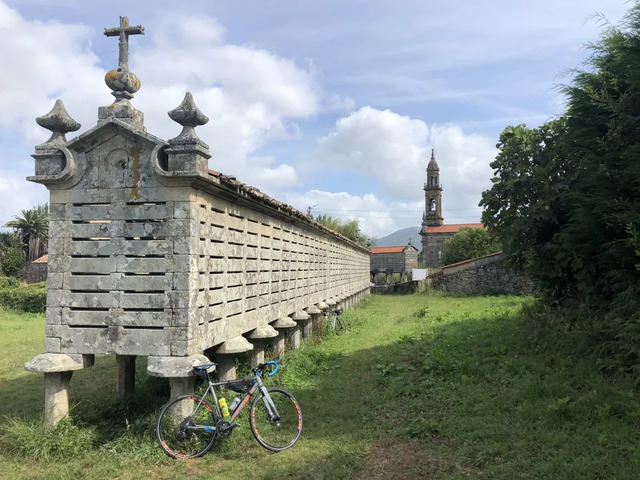
Constructed in the traditional style using granite, the Carnota hórreo is supported by numerous stone pillars and stands proudly next to the Santa Comba church. Built in 1768, it continues to be a popular attraction for visitors to Galicia. Another contender for the title of the longest hórreo is the Araño hórreo in Rianxo, which is said to be just a few meters longer than the one in Carnota. Both structures are a testament to the ingenuity of Galician craftsmanship and are vital components of the region’s heritage.

Hórreos in Portugal: Simplicity and Functionality
In Portugal, particularly near the border with Spain, hórreos take on a more simplified form. These structures are usually smaller and built using cement, with wooden slats for siding. Unlike their Galician counterparts, these hórreos are often more utilitarian in design, focusing primarily on functionality rather than decorative elements.
However, in the agricultural regions closer to A Coruña, Portuguese hórreos adopt a more modern and commercial appearance, with larger, squarer structures made from a combination of cement and brick walls. These more substantial hórreos still maintain the characteristic pillars and flat stones, but they are typically spaced further apart to allow for better airflow and ventilation.
Asturias and Cantabria: Square and Sturdy
In Asturias and Cantabria, hórreos are distinctly square in shape, a departure from the rectangular designs commonly found in Galicia and Portugal. These square hórreos are often larger and sturdier, sometimes resembling small houses rather than traditional granaries. In village settings, these structures can be more difficult to spot, as they blend in with the surrounding architecture, appearing like small buildings rather than standalone storage units.
The size and sturdiness of these hórreos are a reflection of the region’s harsh climate and rugged terrain. In areas where the weather can be unpredictable and the land difficult to cultivate, larger and more robust hórreos provided essential storage space for the local population.
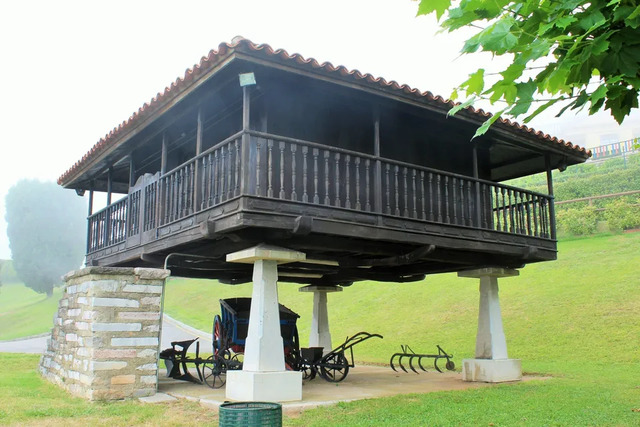
The Practical and Symbolic Role of Hórreos
Hórreos were originally built to store corn, root vegetables, and other grains, particularly during the harvest season when food was abundant. Their elevated design kept these valuable resources safe from rodents, pests, and the damp ground, ensuring that the food remained dry and preserved for later use. In addition to their practical function, hórreos also had a symbolic role in the community. They represented a link between the land, the people, and the harvest.
Today, many hórreos are still in use, although some have been repurposed for decoration or as garden features. In more rural areas, hórreos continue to serve as functional storage units, while in urban settings, they are often painted with vibrant colors or adorned with tiles, adding a touch of rustic charm to the landscape.
Modern-Day Hórreos: A Blend of Tradition and Art
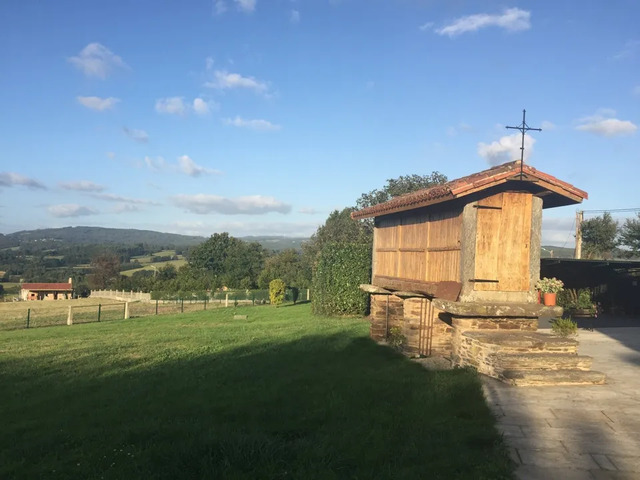
While many hórreos remain in use for their original purpose, they have also become a symbol of Galician and Iberian culture. In modern times, these structures are frequently used as decorative pieces, adding a sense of tradition and heritage to gardens, courtyards, and public spaces. The brightly painted wooden hórreos found in places like Arzúa, located along the Camino de Santiago, are perfect examples of how these ancient structures have been adapted for contemporary use.
In addition to their aesthetic value, hórreos also serve as a reminder of the importance of preserving local traditions and craftsmanship. The continued existence of hórreos in rural areas is a testament to the enduring legacy of this unique form of architecture and its significance to the people of Galicia, Asturias, and Portugal.
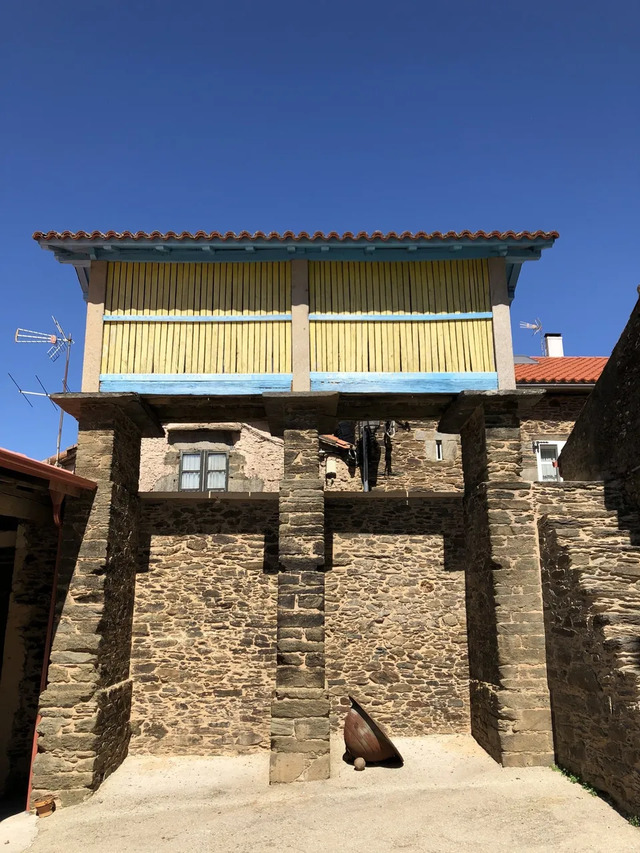
Video
Watch this video to learn about the hórreo nuevo, a modern take on the traditional Galician granary, blending history with innovation.
Conclusion: A Timeless Cultural Landmark
The hórreo is more than just a grain storage structure; it is a symbol of the deep connection between the people of the Iberian Peninsula and their land. These fascinating buildings, with their distinctive designs and cultural significance, continue to captivate visitors and locals alike. Whether used for storage, decoration, or as part of a larger cultural landscape, hórreos are a testament to the ingenuity and resilience of the people who built them. As long as these structures continue to stand, they will remain an enduring symbol of the rich heritage of Galicia, Asturias, and Portugal.
